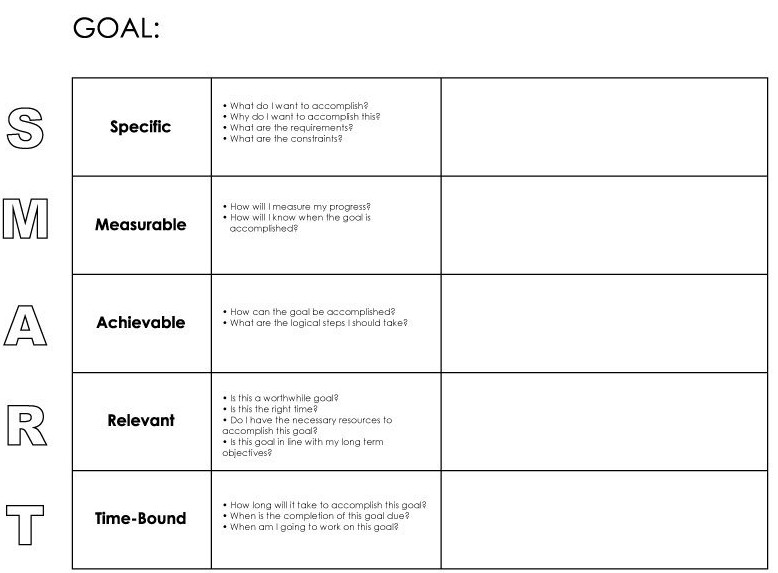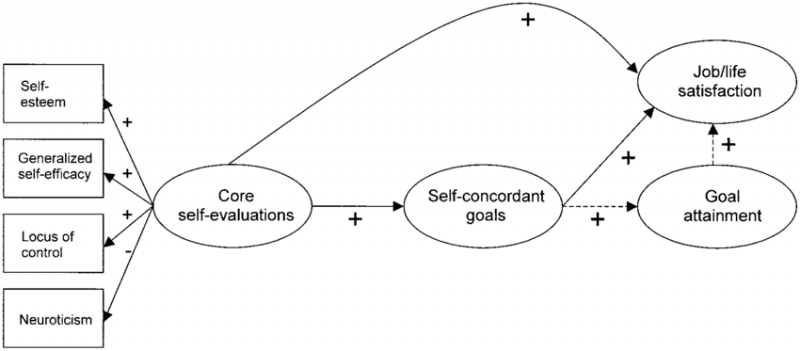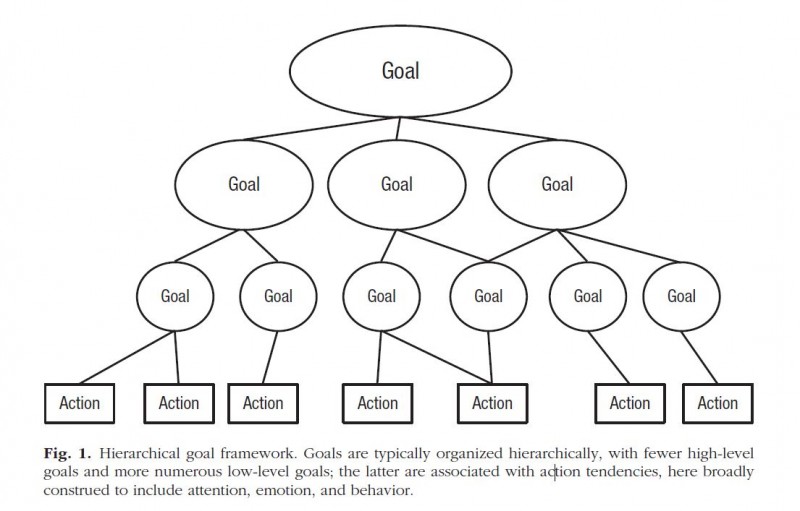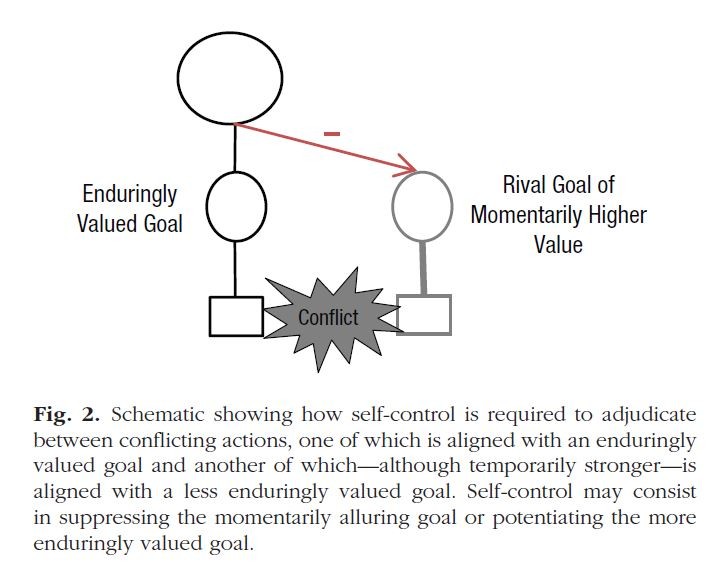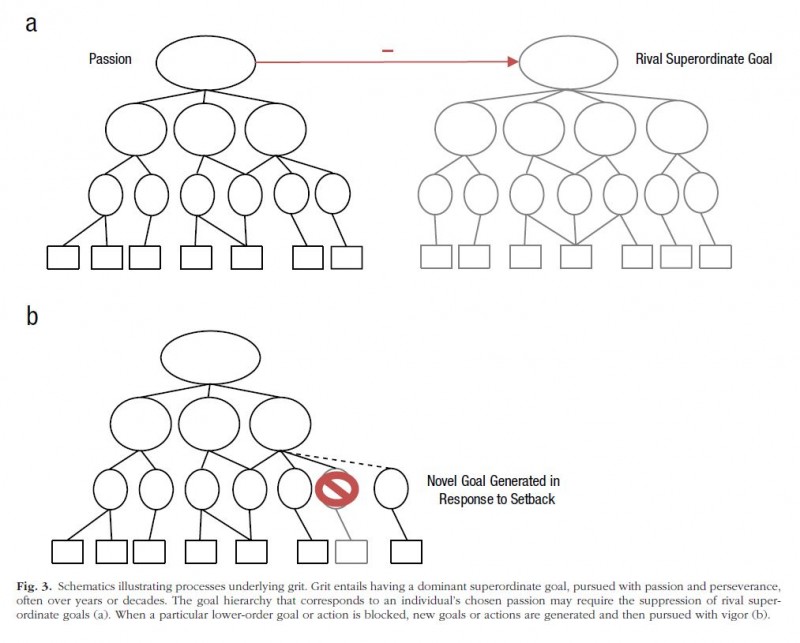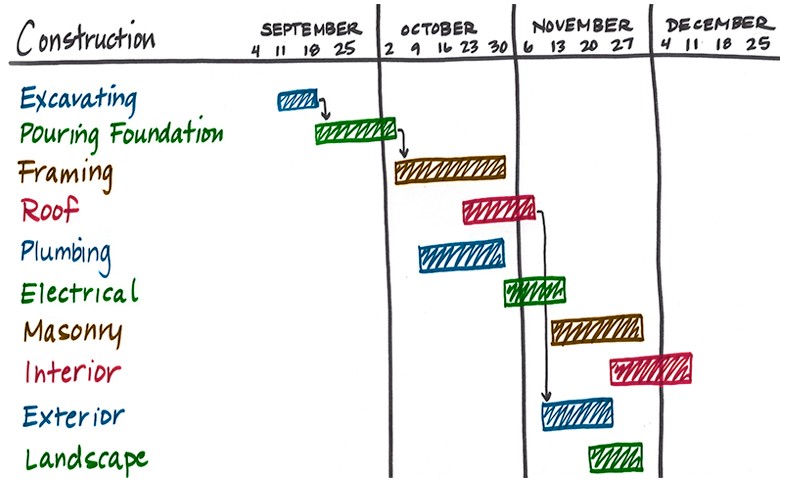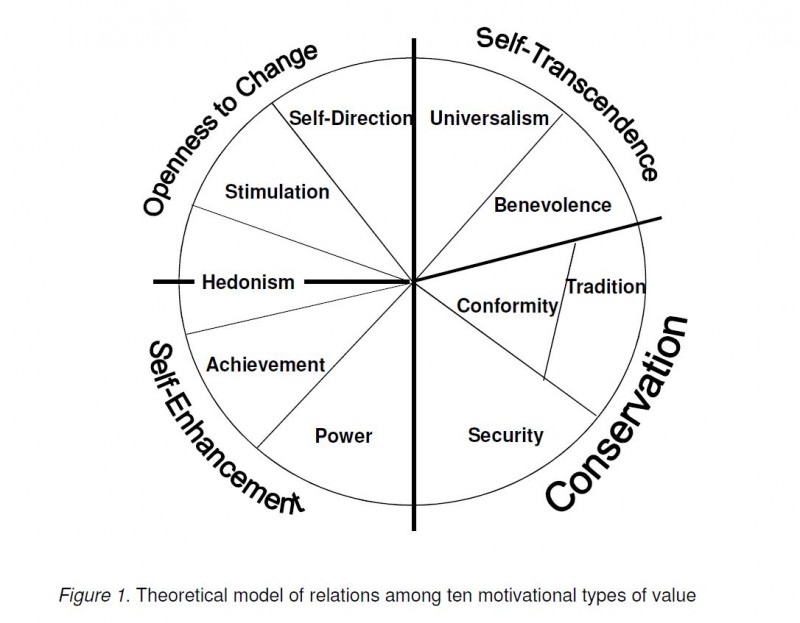
Introduction: You Choose Who Sets Your Goals
A goal is just a desired outcome of some action. Having a goal says nothing about you. In fact, most goals are not established by the people involved in pursuing them. Goal setting, as a field of inquiry, emerged in the business and management sciences. The scholars who developed the early concepts were concerned with corporate goals. Corporations are not people.
If you work in an organization, you are working under its goals. You may or may not have participated in setting them (probably not), but you will put the effort into pursuing them. It’s your job. We all, at some level, invest effort in collective goals.
There is a different class of goals that has direct implication over what moves a person (and in my present “motivation project”): the personal goals.
As I pointed out last month, most of humanity is excluded from the complex, long-term goal-setting that scholars have studied. For the absolute poor, there is no long-term future: just basic needs, such as food and shelter. These are extremely short-term tasks.
There are people who can engage in goal-setting but won’t. This social segment, in every country, is still larger than those who can and will establish realistic, organized life plans around long-term goals.
All adult and frequently teenage individuals who are not terminally ill or living in extreme poverty live according to a goal-structured life. I’ve sat down with people in Crackland (urban areas in certain large cities where addiction-victimized homeless people gather) and even among them, some, if not many, have long-term goals. They lack realistic goal hierarchies and action plans to achieve them, but they do have goals.
The housewife whose teenage goal was to marry a “good man” who could provide for her and for the children she would have with him is functioning in a low-autonomy level. These goals, despite being very long term (a mortgage can take over 30 years to be paid off), were borrowed from a social template.
Let us compare our housewife with a young architecture student coming back from a year in the Peace Corps, who decided to become an architect and develop affordable mass housing with alternative materials. His goal structure started with very abstract values and a mission. That part of goal setting is not time-limited but it is also the most inflexible. That is an advantage: all setbacks are more easily handled when the top goal is value-protected. He will work his life project top-down until the first measurable goal: his Ph.D. thesis about a small set of 50 houses built with alternative materials in the outskirts of Lima, Peru, in partnership with the Department of Housing and Urban Affairs.
Now consider a young teenage girl in rural Brazil ten years ago, cheap labor at a sugar cane farm, who realized she was strong. While watching an MMA fight, an intense desire formed in her mind: “One day, I will be the world champion and I will have a name. I will no longer be some nameless cheap farm worker.” As Big John raises her left fist now at the UFC octagon and she becomes the 115-pound champion, she has a name: Claudia Andrade (I fictionalized this fighter combining the stories of real fighters Claudia Gadelha and Jessica Andrade, both of whom are young Brazilian UFC fighters at the 115-pound class, coming from difficult social backgrounds and not yet their class champion).
The housewife, the architect, and the fighter all live according to a long-term goal-oriented life-project. What is the difference? In the first case, the individual was not the proactive agent of the goal-setting process. In the other two, they were. The architect has the most abstract and highest-level top-goal of the three. We usually refer to it as “transcendent goal” or mission-oriented behavior. The fighter has an extremely powerful goal of claiming the right to an identity, historically denied to the social group she comes from.
The architect and the fighter have purpose and meaning. The housewife doesn’t. They all have values. For that reason, the housewife can be a great mother and even find purpose in the middle of the way. That can be stressful since she was not equipped to change course and be in charge, while the other two, with inflexible top goals, are.
You are living according to goals, whether you established them or not and whether you are aware of that or not. Considering all the published scientific evidence, I can confidently tell you that:
- You have much better chances at everything and anything if you are in control, or the most autonomous agent of your own life;
- The quality of your decisions is directly proportional to the quality and quantity of the information that guides them;
- The more abstract and transcendent the top goal is, the more flexibility you enjoy at the lower levels of the goal structure hierarchy.
You choose: be the master of your fate and the captain of your soul, or outsource it.
Goal Setting
Edwin Locke is considered the “father” of goal setting theory and the landmark for that is usually cited as his 1996 article “Motivation through conscious goal setting” (Locke 1996). The article points out that it is the result of 30 years of systematic research on the topic. It has been simplified and applied in different fields over the decades. You probably heard about the SMART criteria for goal setting. The SMART criteria article was originally published by Doran (1981). “SMART” is now a popular acronym and stands for:
Specific
Measurable
Achievable
Relevant
Time-bound
Here is an example of a template from Template Lab, where you can find many others:
What Locke’s research revealed, laying the foundation for future studies, can be listed in the following set of findings:
- Finding #1. The more difficult the goal, the greater the achievement.
- Finding #2. The more specific or explicit the goal, the more precisely performance is regulated.
- Finding #3. Goals that are both specific and difficult lead to the highest performance.
- Finding #4. Commitment to goals is most critical when goals are specific and difficult.
- Finding #5. High commitment to goals is attained when (a) the individual is convinced that the goal is important; and (b) the individual is convinced that the goal is attainable (or that, at least, progress can be made toward it). (These are the same factors that influence goal choice)
- Finding #6. In addition to having a direct effect on performance, self-efficacy influences: (a) the difficulty level of the goal chosen or accepted, (b) commitment to goals, (c) the response to negative feedback or failure, and (d) the choice of task strategies.
- Finding #7. Goal setting is most effective when there is feedback showing progress in relation to the goal.
- Finding #8. Goal setting (along with self-efficacy) mediates the effect of knowledge of past performance on subsequent performance.
- Finding #9. Goals affect performance by affecting the direction of action, the degree of effort exerted, and the persistence of action over time.
- Finding #10. (a) Goals stimulate planning in general. Often the planning quality is higher than that which occurs without goals. (h) When people possess task or goal-relevant plans as a result of experience or training, they activate them virtually automatically when confronted with a performance goal. (c) Newly learned plans or strategies are most likely to be utilized under the stimulus of a specific, difficult goal.
- Finding #11. When people strive for goals on complex tasks, they are least effective in discovering suitable task strategies if: (a) they have no prior experience or training on the task; (b) there is high pressure to perform well; and (c) there is high time pressure (to perform well immediately).
- Finding #12. Goals (including goal commitment), in combination with self-efficacy, mediate or partially mediate the effects of several personality traits and incentives on performance.
- Finding #13. Goal-setting and goal-related mechanisms can be trained and/or adopted in the absence of training for the purpose of self-regulation.
- Finding #14. Goals serve as standards of self-satisfaction, with harder goals demanding higher accomplishment in order to attain self-satisfaction than easy goals (Locke 1996, underline is mine).
In a later publication, Locke and Latham (2006) pointed out one of the most relevant aspects of goal-setting for the purposes of the present “motivation project”: that goal-setting necessarily implies a certain level of discontent with the current condition coupled with a desire to achieve a more satisfactory one (“discrepancy-creating process”).
Grant (2012) further elaborated this idea into a definition of personal goal that encompasses cognitive and emotional processes involving memory and creative representation. Think about it: how can you envision a desired outcome, in the future, of a set of actions not yet accomplished? There has to be a cognitive image of an ideal stored in memory for comparison with the actual state and each intermediary state. The goal is that internal representation (possible because of the memory of previous experiences or otherwise acquired knowledge), which is desired in a way that drives the elaboration of a plan.
Another important aspect of personal goal-setting success is known as “self-concordance”: the consistency with the person’s core values and high-level interests (Sheldon & Elliot 1999, Sheldon 2002, Smith et al 2011). Another term for self-concordant goal setting is “conation”, the pursuit of personal agendas.
Hypothesized model linking core self-evaluations, goal self-concordance, goal attainment, and job/life satisfaction. From Judge et al (2005).
Goals are more often discordant than concordant. People agree to follow a goal-oriented plan in spite of the fact that it violates the person’s values, beliefs, or concordant goals that the person has to give up. What research suggests is that this scenario is not productive, and most of all, not conducive to well-being or happiness.
Goal Setting Results in a Plan or Project
As I have shown in previous articles, "grit" and "self-control" are related, but they are not the same concept or refer to the same phenomenon. Let’s go back to self-control and grit. Duckworth and Gross (2014) propose that the similarities and differences between grit and self-control can be understood within a hierarchical goal framework:
From Duckworth and Gross 2014.
If properly designed, any person’s goal structure will contain several hierarchical levels of sub-goals and potentially conflicting actions:
From Duckworth and Gross 2014.
While self-control equips you to quench the temptation of checking social media again and, instead, document your goal-oriented progress, have quality-conversation with your child or groom your dog (all of which are subordinated to enduring valued goals), grit keeps you focused on the dominant superordinate goals (functioning on long-term frameworks). Sometimes, a rival superordinate goal must be suppressed. For example: pursuing a medical career, promoting a social project that requires you to act in the capacity of director and pursuing the Olympic medalist goal in weightlifting. Something has to give.
From Duckworth and Gross 2014.
Project Management and Progress Measurement
Once goals were chosen and a plan or project was designed, managing the plan doesn’t look much different whether you want to “break the all-time record on the bench press at the 242 class in three years”, “become a licensed medical doctor in oncology” (nested under higher and higher goals of helping the victims of breast cancer, for example) or “develop a more economic wind energy system”. This video describes the organization of a project for designing and installing a tank:
This is a four-month construction project:
From https://www.smartsheet.com
They all look pretty much the same:
A Gantt chart from https://en.wikipedia.org/wiki/Gantt_chart
Sound and realistic project management is critical to goal achievement. Considering that a person is usually managing multiple goals at the same time, some of which are nested under completely different domain-goals, it is even more so. Being motivated at the start or near the end of a milestone is the rule. Getting stuck in the middle is, unfortunately, common, too (Bonezzi et al 2011).
Performance Responds to Goal-Setting Mediated by Feedback: Journal It
By now you probably know that there is a relationship between goal attainment, knowledge and feedback. That was established way back at the beginning of goal-setting research. Erez (1977) studied how these components were related. Experimental studies with multi-phase goal pursuit demonstrated that feedback significantly favored goal achievement.
Suppose you are training for a competitive event and you adopted a certain program. Every day, you have a routine of exercises to follow. If you don’t document what happened at each session, how do you know if you are actually making progress towards your competitive goal?
Now think about Olympic athletes who commit to a four-year goal-oriented plan. During the four-year preparation for the Olympic Games, there will be other competitive events. Each competitive event is a milestone in the Olympic project. A precise evaluation of everything that happened during the four years, each course-correction, each failure and how it was handled determines the “highest possible successful outcome” for the Olympic games. If the team follows a SMART strategy, the goal is not necessarily the gold: it is the “highest possible successful outcome”.
Top Level Goals, Mission, and Transcendence: Where High-Level Purpose and Meaning Come In
Everyone has values, whether they acknowledge them or not. It doesn’t matter whether they are conscious of how much their actions and goals are rooted in their values: they are just there. Values have been a topic of scholarly work for centuries. Recently, Schwartz and other authors (Schwartz 2012) have attempted to systematize basic values that apparently occur in all studied cultures. Their relationship, priority, and hierarchy differ substantially between groups and individuals. They may conflict with one another (and different individuals and groups will handle such conflicts differently) or they may be compatible. This is the list of Schwartz’s "big ten":
- Self-Direction - defining goal: independent thought and action--choosing, creating, exploring
- Stimulation - defining goal: excitement, novelty, and challenge in life.
- Hedonism - defining goal: pleasure or sensuous gratification for oneself.
- Achievement - defining goal: personal success through demonstrating competence according to social standards.
- Power - defining goal: social status and prestige, control or dominance over people and resources.
- Security - defining goal: safety, harmony, and stability of society, of relationships, and of self.
- Conformity - defining goal: restraint of actions, inclinations, and impulses likely to upset or harm others and violate social expectations or norms.
- Tradition - defining goal: respect, commitment, and acceptance of the customs and ideas that one's culture or religion provides.
- Benevolence - defining goal: preserving and enhancing the welfare of those with whom one is in frequent personal contact (the ‘in-group’).
- Universalism - defining goal: understanding, appreciation, tolerance, and protection for the welfare of all people and for nature (Schwartz 2012, underline is mine).
Takeaway
We know that success in any field requires grit, self-control, mental toughness, and other motivational elements. Without goal-setting, though, these capacities or personality traits will not be as effective as they could or even not at all.
The better a person masters the skills involved in goal-setting and project management, the more successful they will be in any domain of their lives.
References
- Bonezzi, A., Brendl, C. M., & De Angelis, M. (2011). Stuck in the Middle. Psychological Science, 22(5), 607–612.
- Doran, George T. "There’s a SMART way to write management’s goals and objectives." Management review 70, no. 11 (1981): 35-36.
- Duckworth, Angela, and James J. Gross. "Self-control and grit: Related but separable determinants of success." Current Directions in Psychological Science 23, no. 5 (2014): 319-325.
- Erez, Miriam. "Feedback: A necessary condition for the goal setting-performance relationship." Journal of Applied psychology 62, no. 5 (1977): 624.
- Grant, Anthony M. "An integrated model of goal-focused coaching: An evidence-based framework for teaching and practice." International Coaching Psychology Review 7, no. 2 (2012): 146-165.
- Judge, Timothy A., Joyce E. Bono, Amir Erez, and Edwin A. Locke. "Core self-evaluations and job and life satisfaction: the role of self-concordance and goal attainment." Journal of applied psychology 90, no. 2 (2005): 257.
- Locke, Edwin A. "Motivation through conscious goal setting." Applied and preventive psychology 5, no. 2 (1996): 117-124.
- Locke, Edwin A., and Gary P. Latham. "New directions in goal-setting theory." Current directions in psychological science 15, no. 5 (2006): 265-268.
- Schwartz, S. H. “An Overview of the Schwartz Theory of Basic Values”. Online Readings in Psychology and Culture, 2:1. (2012): 1-20.
- Sheldon, Kennon M. "The self-concordance model of healthy goal striving: When personal goals correctly represent the person." Handbook of self-determination research (2002): 65-86.
- Sheldon, Kennon M., and Andrew J. Elliot. "Goal striving, need satisfaction, and longitudinal well-being: the self-concordance model." Journal of personality and social psychology 76, no. 3 (1999): 482.
- Smith, Alison L., Nikos Ntoumanis, Joan L. Duda, and Maarten Vansteenkiste. "Goal striving, coping, and well-being: A prospective investigation of the self-concordance model in sport." Journal of Sport and Exercise Psychology 33, no. 1 (2011): 124-145.
Many of the concepts referred to here are described in the articles below:
- Why Do You Lift — Meaning, Identity, Hope and Passion
- Why Do You Lift — Defining Passion
- Why Do You Lift — Defining Hope, Motivation, and Risk
- Why Do You Lift — What the Absence of Motivation Teaches Us (Suicide)
- The Role of Grit in Sport Performance
- The Role of Mental Toughness in Sport Performance
- The Role of Self-Regulation and Control in Sport Performance
- The Plan: Walking the Talk










